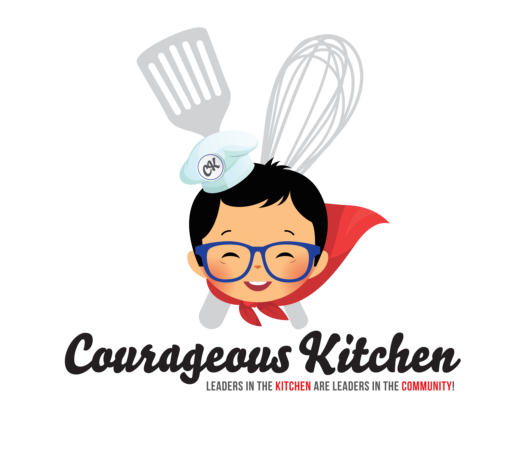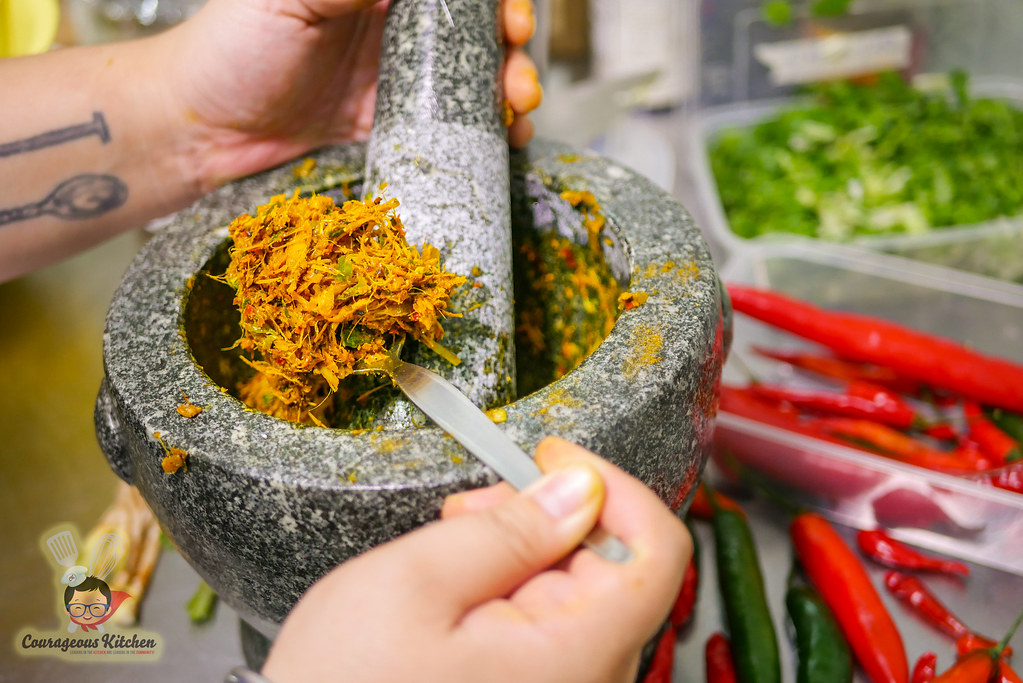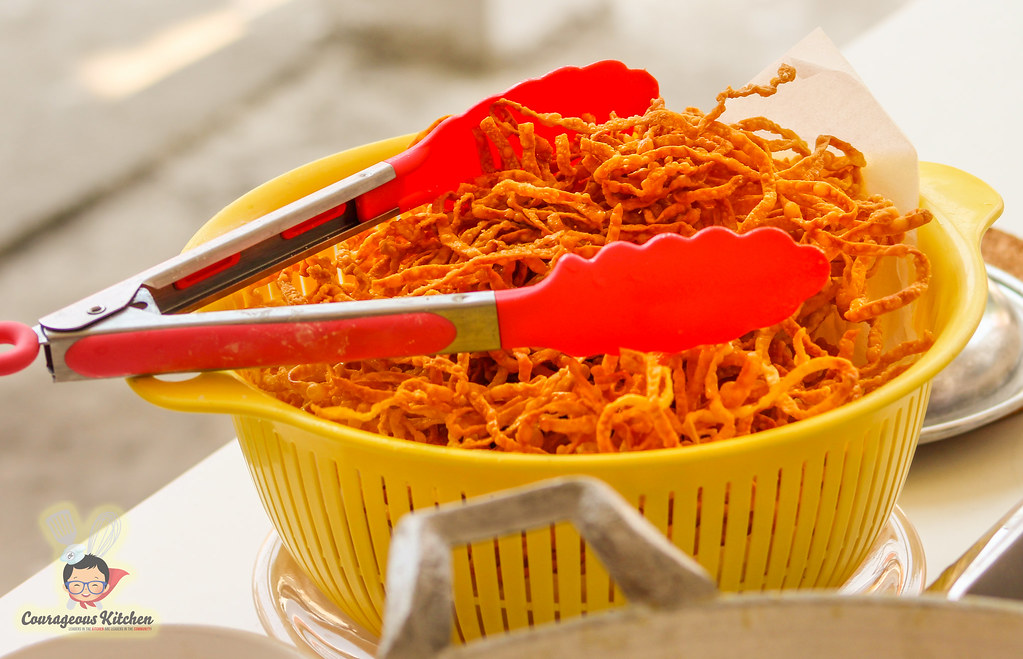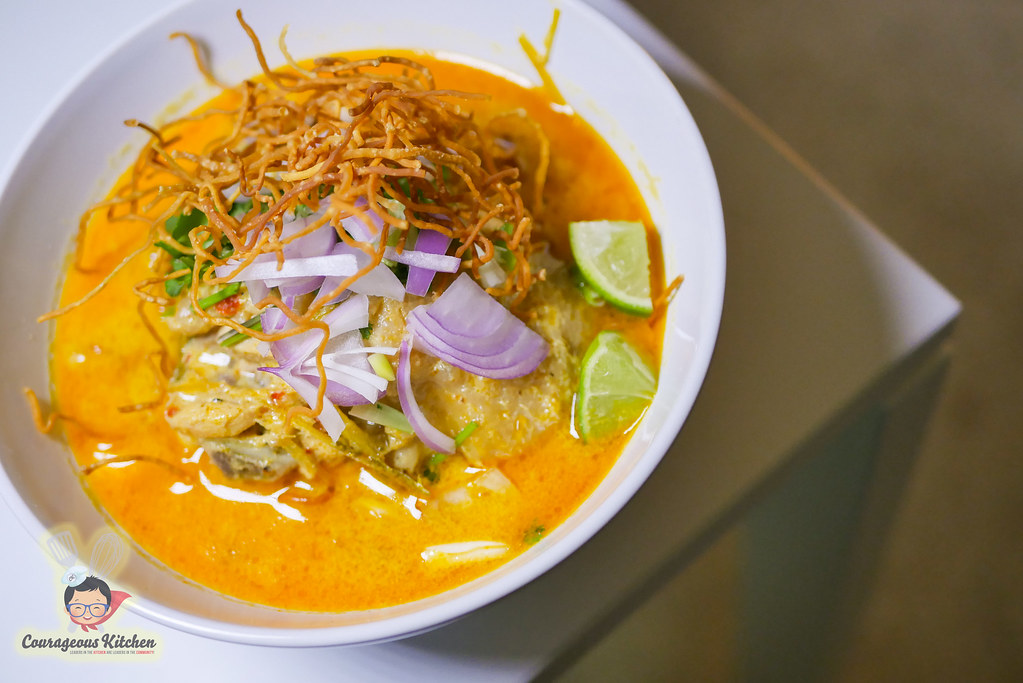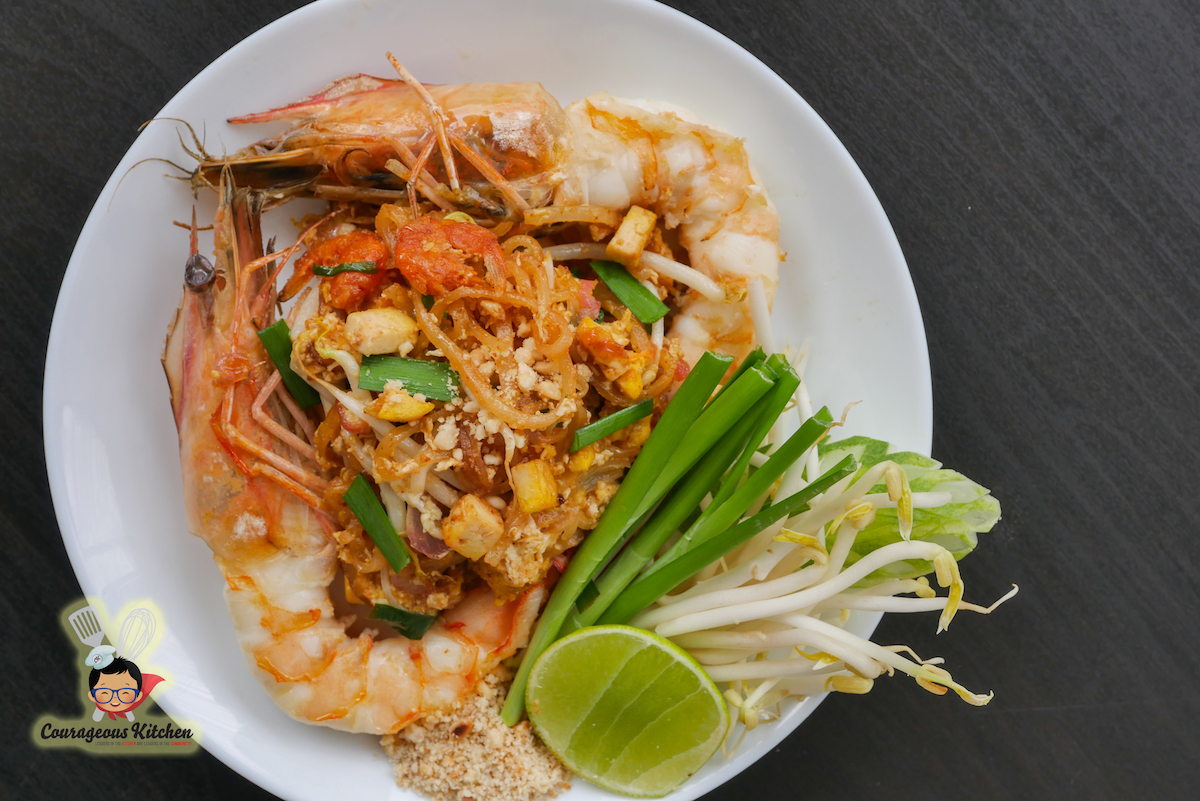
A Classic Pad Thai Recipe
Pad Thai is Thailand’s most recognizable dish and one of our most popular cooking requests! Below you can find a version adapted to allow you to recreate this delicious recipe at home.
You can catch us cooking pad thai in our cooking class in Bangkok, but we mastered it by teaching youth in our charity’s cooking program. In the video you’ll see them in action, working in teams to prepare the dish after we’ve demonstrated the steps. Each week they learn a fun Thai recipe or international dish, all powered by your support and donations!
Watch our teens learn to make this classic Thai dish:
Pad Thai Recipe สูตรผัดไท
Prep time: 20 minutes
Cooking time: 5-10 minutes
Yield: 4 servings
Ingredients:
- 16 oz. dry or fresh rice noodles, at least ¼ inch in thickness (4 oz or 100g per person)
- 4 Tbsp. peanut or rice bran oil for frying (1 tbsp per person, because you’ll fry each portion separately)
- 8 oz. pack of extra firm tofu cubed
- 4 large eggs
- 2 shallots diced
- 1 bundle fresh scallions or garlic chives chopped into ½ inch pieces
- 2 cups bean sprouts
- 2 Tbsp fresh minced garlic
Time Saving Tip: Cooking for a big group and don’t want to cook each portion separately? Stir fry all your small ingredients together (shallot, tofu, etc) and then add your proteins and get them fully cooked. Set this aside and use the empty wok to cook your noodles and egg in batches. As each ingredient finishes add it to a mixing bowl where you can mix the ingredients again before serving.
Even the busiest street food stalls don’t make more than 1-2 portions of noodles per wok at a time. This is because if you rush the noodles and overload your wok, you end up with some noodles being overcooked, while others are terribly chewy. You can also swap your rice noodles for an easier type of noodle to cook in large quantities, like instant noodles. This is exactly what we do in our kid’s version of pad thai.
Pad Thai Sauce Ingredients:
- 1 tbsp oil
- ½ cup diced shallots
- ¾ cup fresh tamarind pulp
- ¼ cup water (to adjust the texture of the tamarind pulp)
- 3-4 Tbsp. palm sugar
- 2 Tbsp. fish sauce
- pinch of white pepper and dried chili flakes to taste
- pinch of paprika for color
Optional Ingredients & Garnish
- 8 oz. protein of choice (most commonly shrimp or chicken)
- ⅓ cup small dried shrimp (1 tbsp per person)
- 1 limes cut into wedges (1 lime wedge to garnish each plate)
- Crushed unsalted peanuts
- Dried red chili flakes
- Extra bean sprouts, garlic chives, and banana blossom for garnish
Preparation:
Fully submerge and soak dry noodles in cold water for 20 minutes. If using fresh noodles, soak for 10 minutes. Once noodles are al dente, strain and set aside. If soaked too long, noodles will become gummy to the touch. Prep additional ingredients in advance.
Pad Thai is traditionally cooked very quickly over high heat, so laying out all ready ingredients is essential for a quality dish.
Directions:
Heat large wok on high. Add 1 tbsp oil, shallots, meat, dried shrimp and 2 oz. tofu. Cook for approximately 3 minutes until browned and protein is cooked all the way through, remove meat and set aside. Add in ½ tbsp garlic, 4oz. noodles, 1 cup sauce stirring vigorously until noodles soften. You can add in a little bit of water to help soften. Throw in ½ cup bean sprouts, pinch of garlic chives, and mix thoroughly.
Push your noodles over to one side of the wok, leaving one side clear and crack 1 egg directly into opening, scramble and cook to 80% — do not fold in. Turn down heat to low. Fold noodles over and set directly on top of egg, about 30 seconds to finish cooking. Remove from heat. Plate noodles, add extra chives, peanuts, chili flakes and lime wedges on top for garnish.

Eat and enjoy! Remember your donations help us to keep sharing recipes and training more students for courageous cooking! You can also find more info to answer your most common questions about pad thai. While this can be an intermediate level dish to make at home, once you’ve mastered cooking your rice noodles, you really can make a version that rivals that of your local Thai restaurants.
Credit: Special thanks to Christy Innouvong for writing this recipe, and Dew Napattaloong for creating the recipe video.
How much pad thai should I make at once?
Pad Thai is a one plate dish and meant to be made in single portions. This recipe includes enough ingredients for four servings. However, directions are written for single batch only. Use remaining ingredients to make additional batches if desired, sauce can be kept for a month or more if sealed well and refrigerated.
Can I cook my pad thai in advance and eat it later?
Unfortunately, this isn’t the best idea because the noodles will become gummy. We recommend prepping all the pad thai ingredients and sauce in advance. This will make it easier when you begin to stir fry. After you stir fry your noodles, you should eat it immediately for the best result. If the noodles have a chance to cool, they will begin to clump together.
To save time, cook your other ingredients in advance. They can be thrown in the wok to reheat, while you cook your noodles. This will save time and be much tastier than having microwave reheated, leftover pad thai.
How different is pad thai in Thailand versus elsewhere?
We find that many versions of pad thai (including some in Thailand) are overly sweet. This is likely due to varying ways to make the pad thai sauce. The sauce should balance the sourness and sweetness, and be tangy when you eat the noodles. If your noodles are too sweet, this flavor will dominate your experience of the dish, and the medley of flavors from ingredients such as the dried shrimp and radish will be muted. We’re aware some people may prefer this, but we want to give you a Thai perspective on how pad Thai should really taste!
Is pad thai Thailand’s national dish?
No. Pad Thai is Thailand’s most well known dish. You may argue that the dish is more popular in western countries than it is in Thailand. This makes finding a tasty, authentic version difficult to find in Bangkok. We recommend hunting down a restaurant that specializes in these noodles, or you can always learn to make this recipe in our Courageous Kitchen cooking class.
Can I add meat to this recipe?
Yes, pad thai is most commonly made with chicken or shrimp. You can add 50-100 grams of meat per serving. However if you decide to add shrimp, we recommend you saute the shrimp first.
Unlike the chicken, the shrimp is easy to overcook and may begin to come apart as you vigorously stir your noodles together. Instead, we recommend you shallow fry them first in a few teaspoons of oil. When the shrimp is cooked, set aside. Then keep your now shrimp flavored oil for your batch of pad thai!
What other versions of pad thai should I try?
We love the egg wrapped version of pad thai. This is created by making a thin omelette style wrapper and adding your cooked noodles inside. This can be a lot of work when you’re hungry, but if you’ve got extra time and hands in the kitchen, it is delicious and looks beautiful as well.
In addition to egg wrapped pad thai, there is a version of pad thai cooked in Thailand’s eastern coastal provinces that diverges away from the common versions most people know. In places like Pattaya, Chonburi, Chantaburi, and Rayong you can find pad thai cooked with chunks of crab meat! These coastal regions also prefer a very oily sweet sauce, made by using the oil from the head of the shrimp. They will also use ‘sen jan’ (ผัดไทเส้นจันท์), which are thinner rice noodles than typically used in better known versions. Although thinner, the noodles hold up better for stir frying and are used in other recipes in this region as well.
